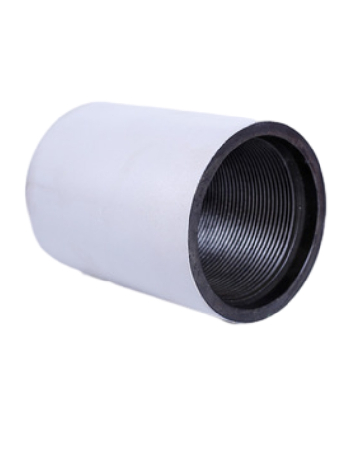- Afrikaans
- Albanian
- Amharic
- Arabic
- Armenian
- Azerbaijani
- Basque
- Belarusian
- Bengali
- Bosnian
- Bulgarian
- Catalan
- Cebuano
- Corsican
- Croatian
- Czech
- Danish
- Dutch
- English
- Esperanto
- Estonian
- Finnish
- French
- Frisian
- Galician
- Georgian
- German
- Greek
- Gujarati
- Haitian Creole
- hausa
- hawaiian
- Hebrew
- Hindi
- Miao
- Hungarian
- Icelandic
- igbo
- Indonesian
- irish
- Italian
- Japanese
- Javanese
- Kannada
- kazakh
- Khmer
- Rwandese
- Korean
- Kurdish
- Kyrgyz
- Lao
- Latin
- Latvian
- Lithuanian
- Luxembourgish
- Macedonian
- Malgashi
- Malay
- Malayalam
- Maltese
- Maori
- Marathi
- Mongolian
- Myanmar
- Nepali
- Norwegian
- Norwegian
- Occitan
- Pashto
- Persian
- Polish
- Portuguese
- Punjabi
- Romanian
- Russian
- Samoan
- Scottish Gaelic
- Serbian
- Sesotho
- Shona
- Sindhi
- Sinhala
- Slovak
- Slovenian
- Somali
- Spanish
- Sundanese
- Swahili
- Swedish
- Tagalog
- Tajik
- Tamil
- Tatar
- Telugu
- Thai
- Turkish
- Turkmen
- Ukrainian
- Urdu
- Uighur
- Uzbek
- Vietnamese
- Welsh
- Bantu
- Yiddish
- Yoruba
- Zulu
Exploring Various Types of Casing and Tubing Connections in Oil and Gas Industry
Understanding Casing and Tubing Connections in Oil and Gas Operations
Casing and tubing connections are critical components in the oil and gas industry, playing a vital role in the extraction process. These connections ensure the integrity and safety of well operations, prevent environmental contamination, and improve the efficiency of hydrocarbon production. This article delves into the types, functions, and importance of casing and tubing connections.
What are Casing and Tubing?
Casing is a series of steel pipes that are installed in a wellbore to provide structural integrity and protect the well from collapse. After drilling, the well is lined with casing to isolate the different layers of rock and fluids. Tubing, on the other hand, is a narrower pipe that is inserted into the casing through which oil and gas are produced to the surface. The choice of casing and tubing dimensions depends on the specific geological and operational conditions of each well.
Types of Connections
Casing and tubing connections can be categorized into several types, each with unique designs and applications
1. Threaded Connections This traditional method involves cutting threads on the ends of the pipes. Threaded connections are easy to install and cost-effective but may not be as strong under extreme conditions.
2. Welded Connections These are created by welding two pipe sections together. Welded connections provide excellent strength and resistance to corrosion, making them suitable for high-pressure applications. However, welding requires specialized skills and cannot be readily modified.
3. Slip-On and Socket Connections These connections involve fitting a pipe into a socket or sliding it on and securing it in place. They are typically used for short sections and provide a quick and efficient joining method.
4. Flanged Connections Flanged connections consist of two flanges that are bolted together. This type allows for easy disassembly, making it ideal for operations requiring frequent maintenance.
5. Coupling and Swaged Connections These involve a coupling or swaged fitting that joins two pipe sections. They are strong and reliable, commonly used in various applications.
casing and tubing connections

Importance of Quality Connections
Quality connections in casing and tubing are crucial for several reasons
- Safety and Reliability The integrity of the wellbore depends heavily on the quality of casing and tubing connections. Poor connections can lead to leaks, blowouts, or even catastrophic failures, endangering personnel and the environment.
- Hydrocarbon Flow Optimization Efficient connections minimize pressure loss and turbulence, facilitating better hydrocarbon flow from the reservoir to the surface. This is essential for maximizing production rates and reducing operational costs.
- Corrosion Resistance Casing and tubing are often exposed to harsh environments, including corrosive fluids and high pressures. Using high-quality materials and connections enhances resistance to these conditions, prolonging the lifespan of the well components.
- Environmental Protection Properly sealed connections prevent the escape of hydrocarbons and other fluids into the surrounding environment, safeguarding ecosystems and complying with regulatory standards.
Advances in Connection Technology
The oil and gas industry continually seeks to improve casing and tubing connections through technological advancements. Innovations such as threaded connections with improved stress distribution, corrosion-resistant coatings, and advanced materials like carbon fiber composites are being researched and implemented. These advancements aim to enhance the reliability, efficiency, and safety of oil and gas operations.
Moreover, simulations and modeling techniques are being developed to predict the performance of different connection types under various conditions. This understanding allows engineers to select the best connection method based on specific situations, leading to more efficient drilling and production strategies.
Conclusion
Casing and tubing connections play a pivotal role in the successful operation of oil and gas wells. Their proper design, selection, and installation are critical to ensuring safety, optimizing production, and protecting the environment. As the industry evolves, embracing advancements in connection technology will be essential for meeting the increasing demands for energy in a sustainable manner. Understanding the complexities and importance of these connections will aid professionals in making informed decisions, ultimately contributing to safer and more efficient operations across the sector.
-
Tubing Pup Joints: Essential Components for Oil and Gas OperationsNewsJul.10,2025
-
Pup Joints: Essential Components for Reliable Drilling OperationsNewsJul.10,2025
-
Pipe Couplings: Connecting Your World EfficientlyNewsJul.10,2025
-
Mastering Oilfield Operations with Quality Tubing and CasingNewsJul.10,2025
-
High-Quality Casing Couplings for Every NeedNewsJul.10,2025
-
Boost Your Drilling Efficiency with Premium Crossover Tools & Seating NipplesNewsJul.10,2025







